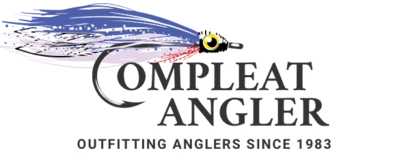Your Cart is Empty
FREE SHIPPING ON ORDERS OVER $75! (exclusions apply) / ALL TACKLE IN STOCK
Menu
-
- New Arrivals
- Sale Gear
- Fly Rods
- Fly Reels
- Fly Lines
- Wading Gear
- Clothing
- Vests & Packs
- Accessories
- Flies
- Fly Tying
- Gifts & Books
- Women's Gear
- Saltwater Angler Gear
- Pre-Owned Gear
- Gift Cards
-
- About Us
- Hire A Guide
- Rewards
- Fishing Reports
- "Compleat" Videos
- Calendar
- Spring Opening 2025
- Contact Us
- 1-203-655-9400
- Login

0
Your Cart is Empty
FREE SHIPPING ON ORDERS OVER $75! (exclusions apply) / ALL TACKLE IN STOCK


















